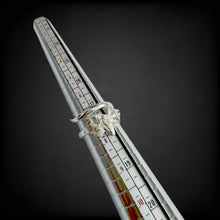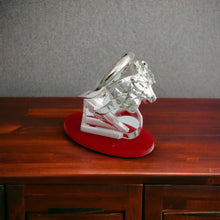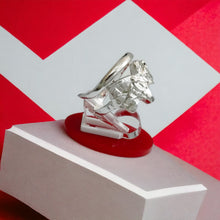
The Silver God Sobek Adjustable Ring: Inspired by ancient Egyptian mythology, this exquisite piece pays homage to Sobek, the crocodile-headed deity symbolizing power and protection. Crafted in sterling silver, it blends history with contemporary style, allowing wearers to carry a piece of ancient mystique with them.
- History: Inspired by ancient Egyptian deity Sobek, god of the Nile and fertility.
- Spirituality: Represents strength, protection, and prosperity in Egyptian mythology.
- Talisman: Believed to bring luck, courage, and abundance to the wearer.
- Handmade: Crafted with care and precision by skilled artisans.
- Healing: Associated with emotional resilience and inner strength.
- Material: Made from sterling silver, symbolizing purity and clarity.
- Symbolism: Depicts the power and ferocity of the crocodile, a symbol of primal energy.
- How to Wear: Adjustable design for versatile styling, ideal for everyday wear or special occasions.
History Side For Those Who Are Interested
Sobek, an ancient Egyptian deity, holds a significant place in the pantheon of gods worshipped by the ancient Egyptians. He is predominantly associated with the Nile River, fertility, protection, and military prowess. Sobek's history reflects the intricate religious beliefs and cultural practices of ancient Egypt.
Origins and Development:
Sobek's origins trace back to the Old Kingdom period (circa 2686–2181 BCE), where he was initially depicted as a crocodile or a man with a crocodile head. This depiction symbolized his association with the powerful and sometimes dangerous Nile crocodile, a creature revered and feared by the ancient Egyptians due to its presence in the Nile River.
As Egypt's civilization progressed, so did Sobek's significance, particularly during the Middle Kingdom (circa 2055–1650 BCE) when he gained prominence as a protective deity. Sobek was often invoked for his ability to safeguard individuals, especially travelers and those engaged in activities along the Nile.
In later periods, particularly during the New Kingdom (circa 1550–1070 BCE), Sobek's importance continued to rise. He became increasingly associated with the military and was often depicted as a fierce warrior, reflecting the militaristic interests of the time. As a patron deity of the Egyptian army, Sobek was believed to provide strength and protection in times of conflict.
Worship and Cult Centers:
Throughout ancient Egypt, various cult centers were dedicated to Sobek's worship. One of the most renowned was the city of Shedet, known in Greek as Crocodilopolis, located in the Faiyum region. The Faiyum was a significant area for Sobek's cult, and crocodiles were revered and even mummified as sacred animals.
Temples dedicated to Sobek were erected in his honor, where priests conducted rituals and ceremonies to honor the god and seek his favor. These temples served as centers of religious activity and also played a role in the administration of the surrounding regions.
Attributes and Symbolism:
Sobek was associated with several attributes and symbols, reflecting his diverse roles in Egyptian mythology. Apart from his connection to the Nile crocodile, Sobek was often depicted wearing the sun disk and the uraeus, symbolizing his association with solar and protective aspects. He was also linked to fertility, with his association with the Nile River representing the source of life and abundance in ancient Egypt.
In art and iconography, Sobek was often portrayed as a powerful deity, sometimes depicted with a falcon or ram head, further emphasizing his connection to other important gods in the Egyptian pantheon.
Legacy:
Despite the decline of ancient Egyptian civilization and the spread of Christianity and Islam, elements of Sobek's worship persisted in Egypt for centuries. His legacy endured through various cultural influences and has even found resonance in contemporary popular culture, where he is sometimes depicted in literature, film, and other forms of media.
In conclusion, Sobek's history reflects the dynamic nature of ancient Egyptian religion and society. As a deity associated with the Nile River, fertility, protection, and military prowess, Sobek played a significant role in the religious beliefs and cultural practices of ancient Egypt, leaving a lasting legacy that continues to fascinate and inspire to this day.









